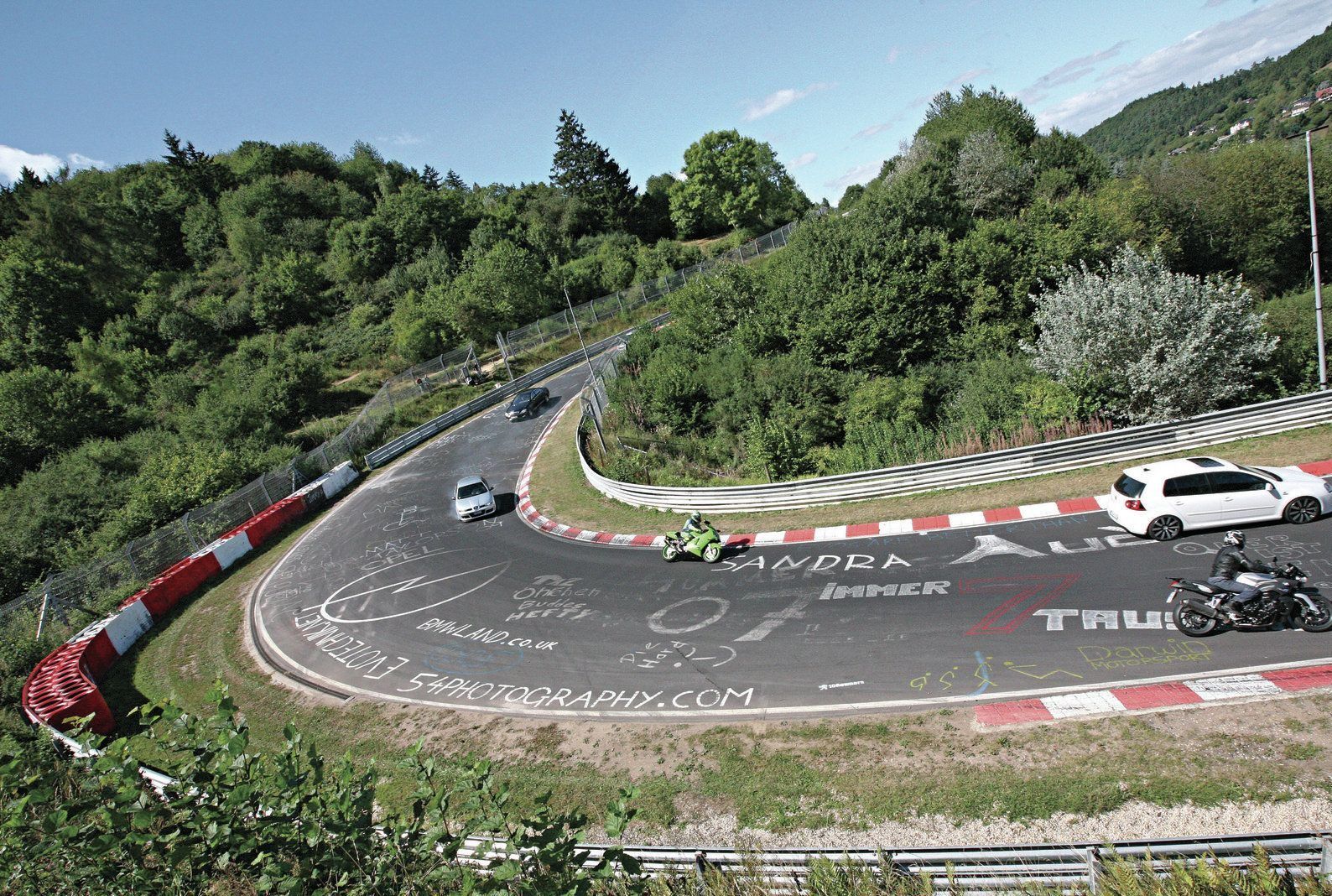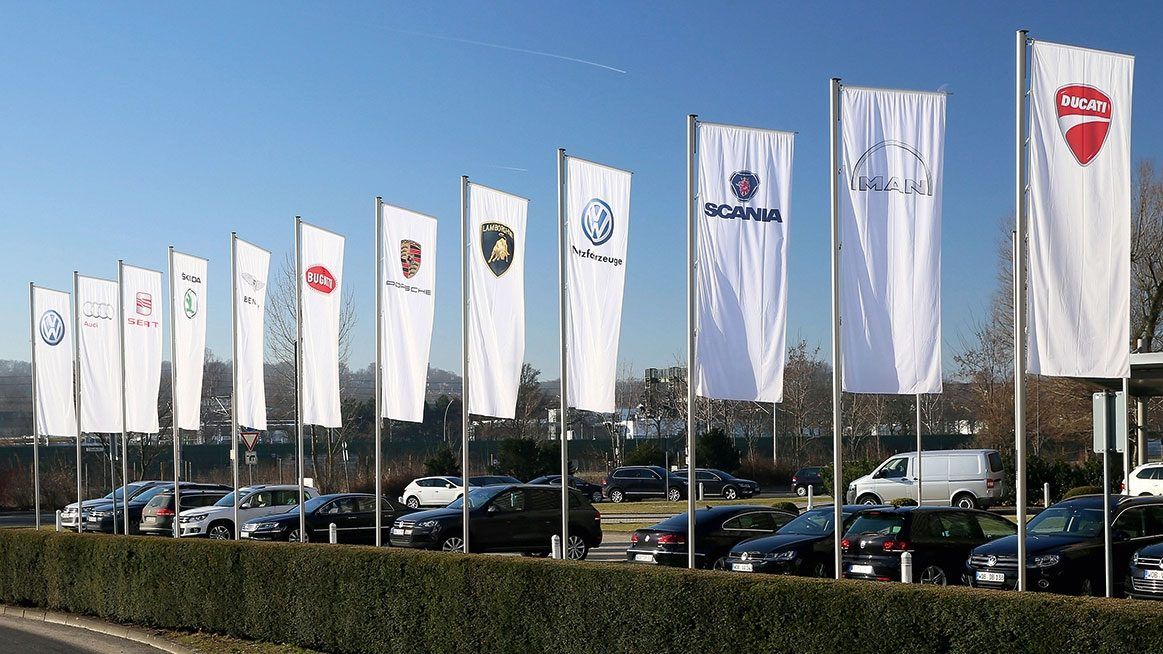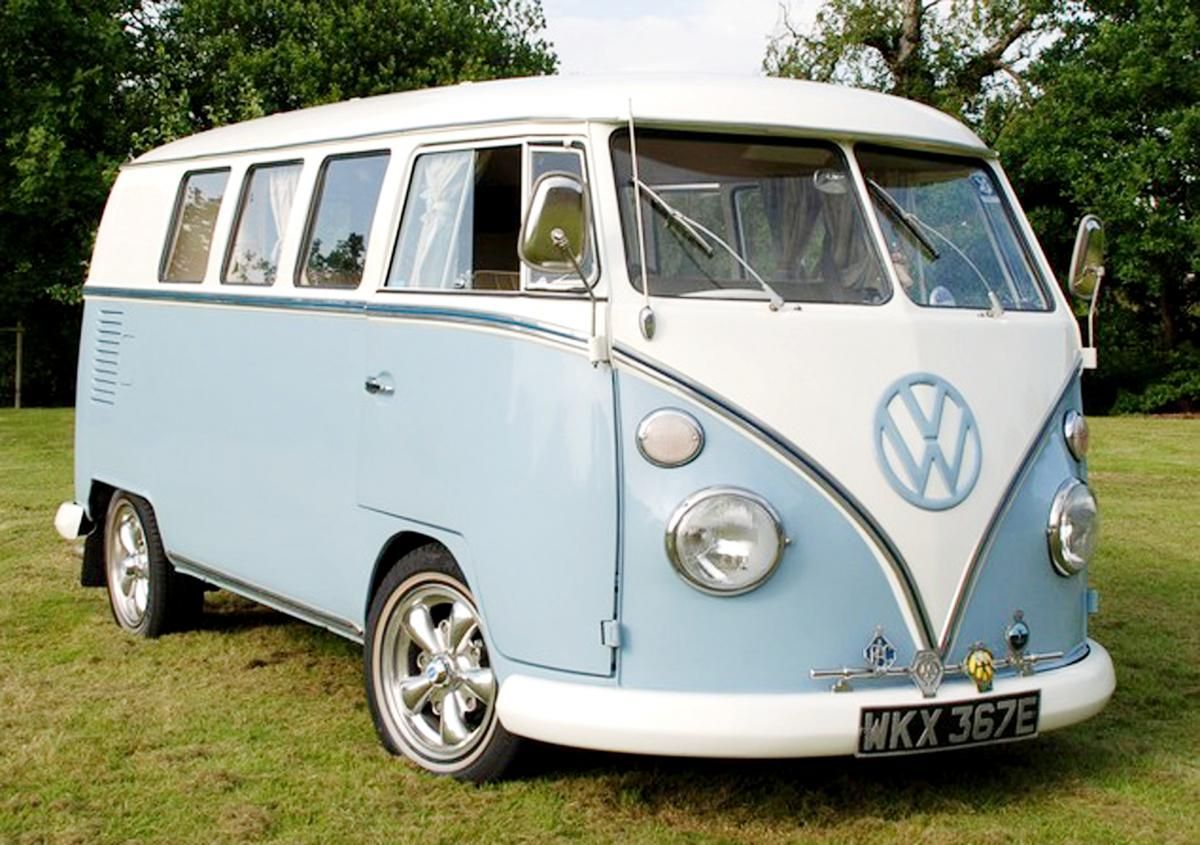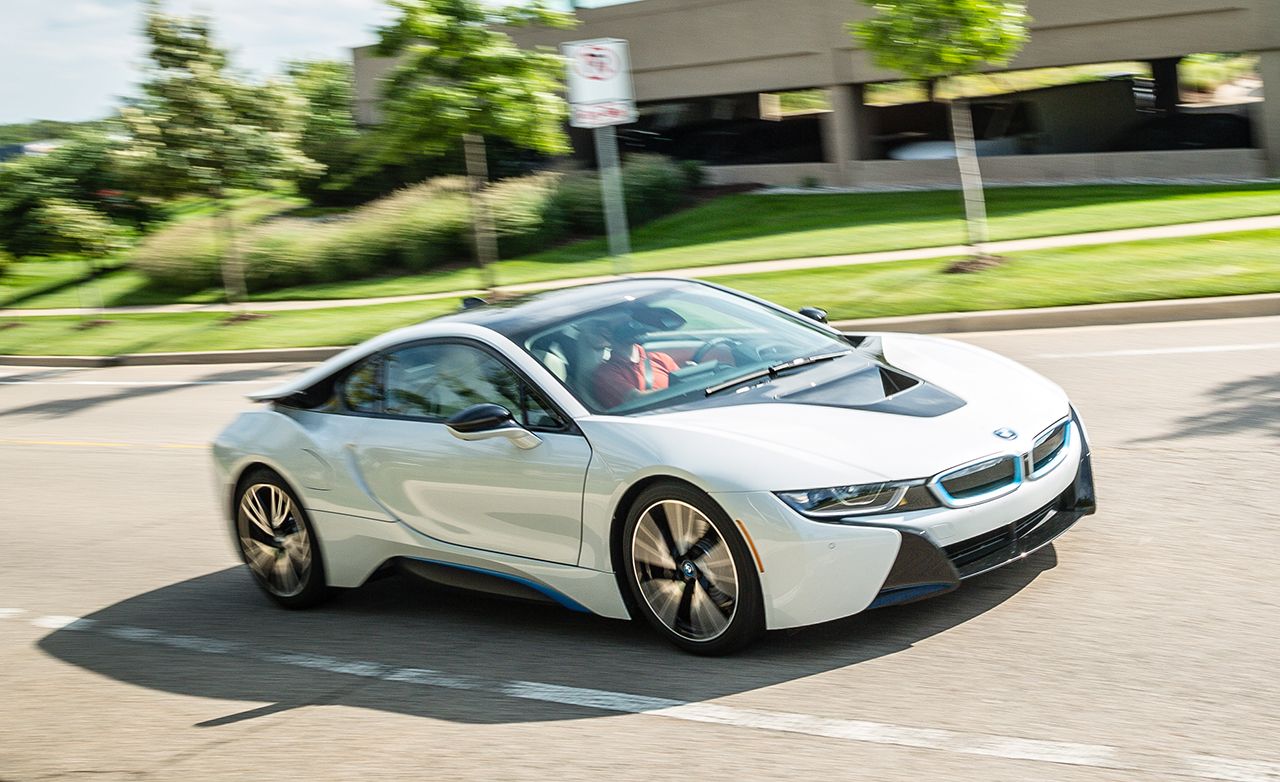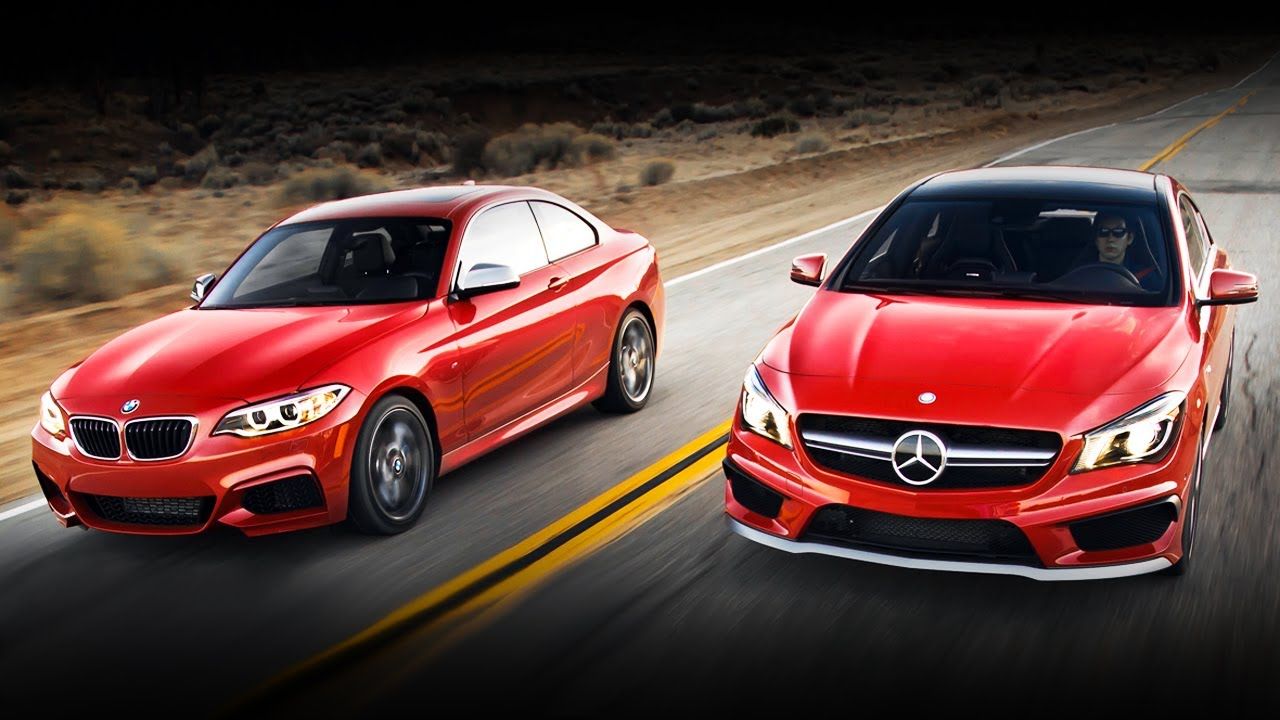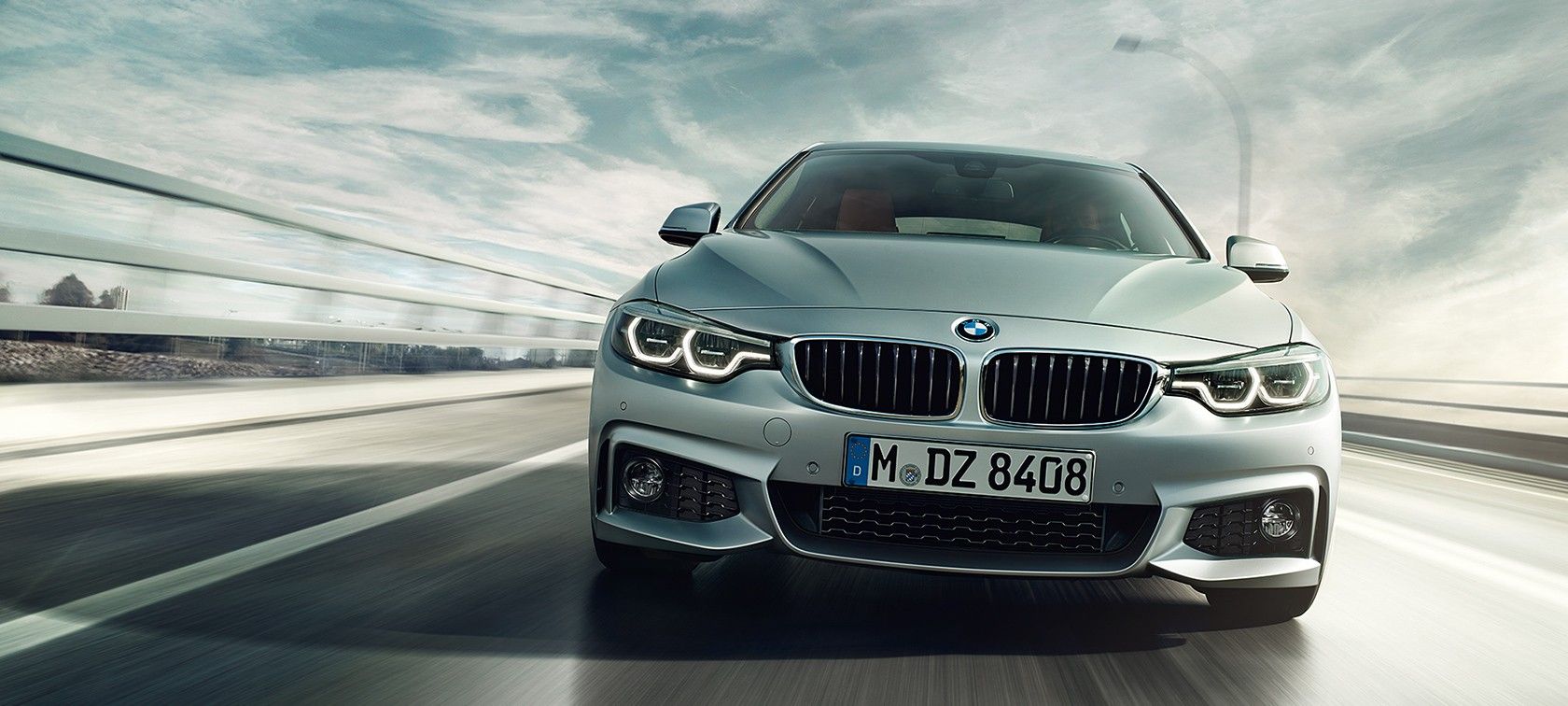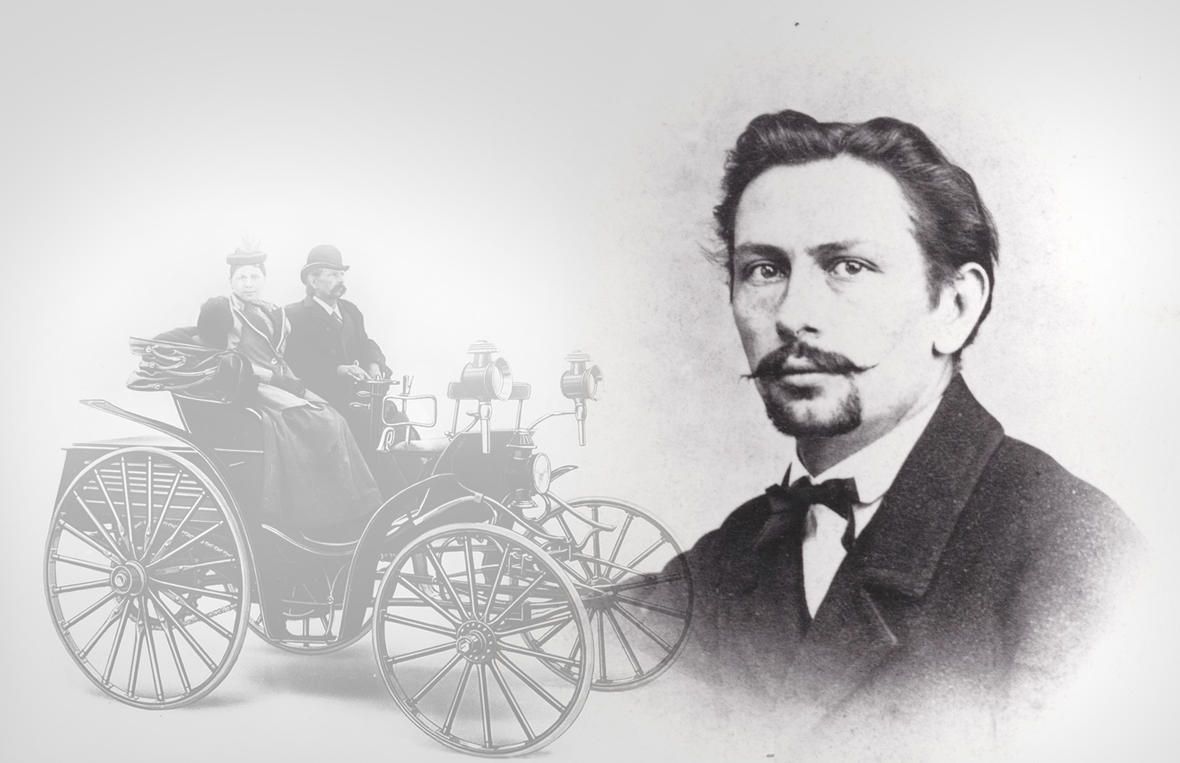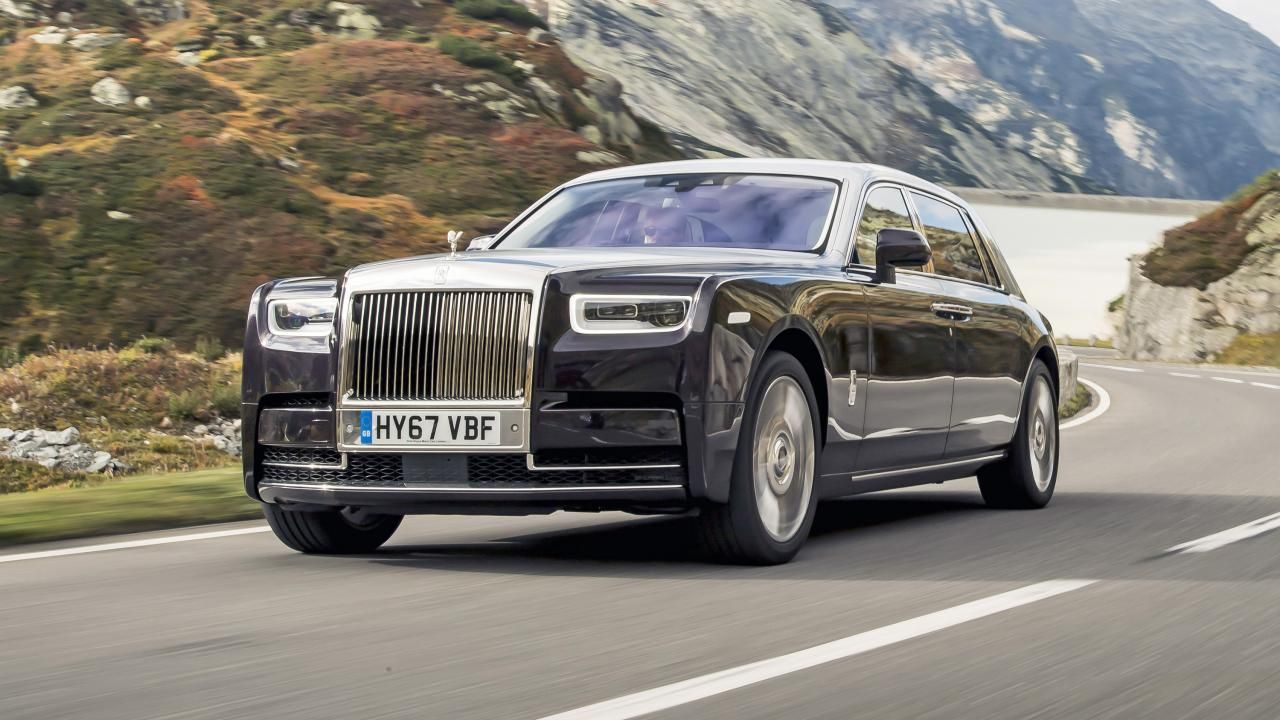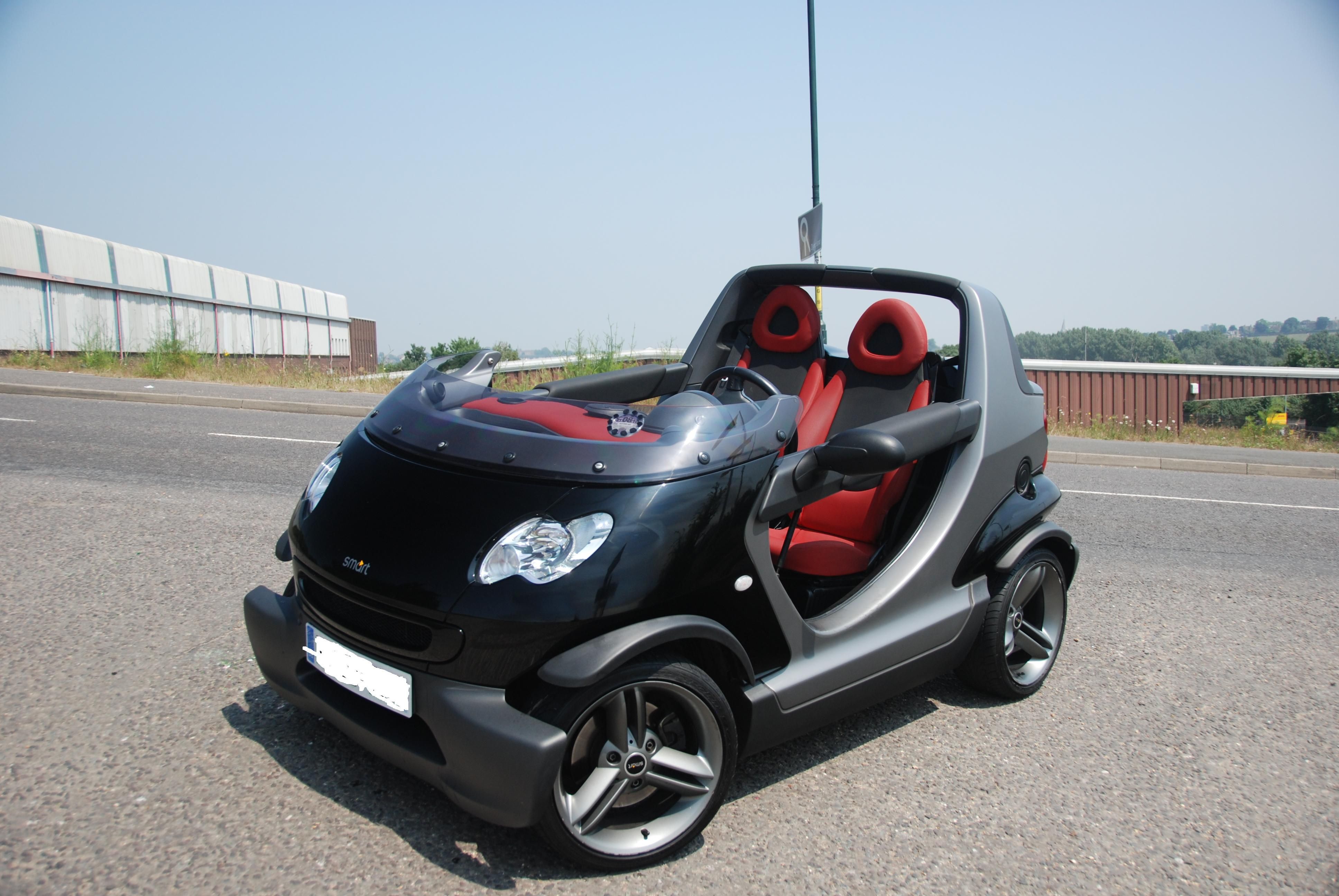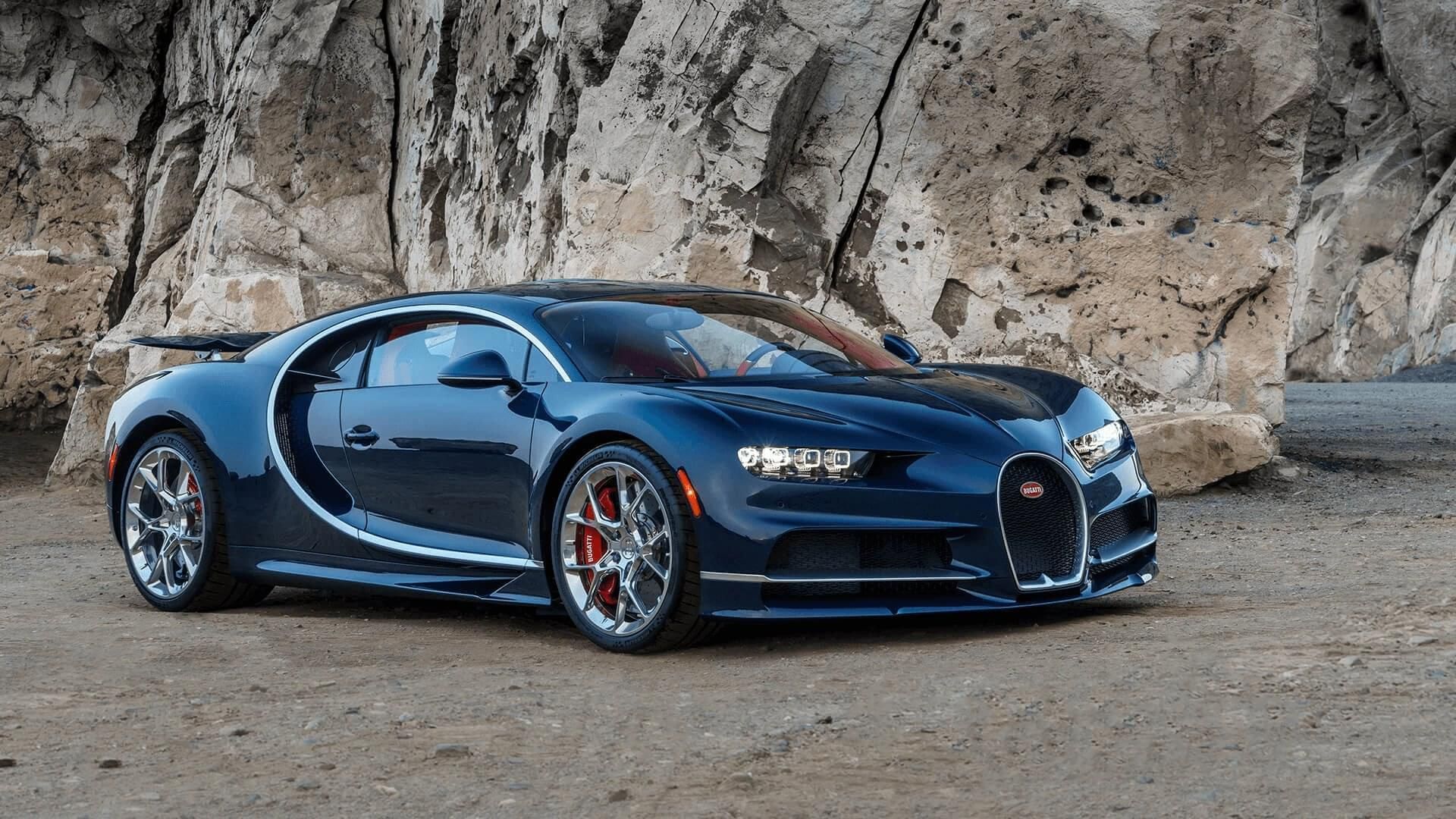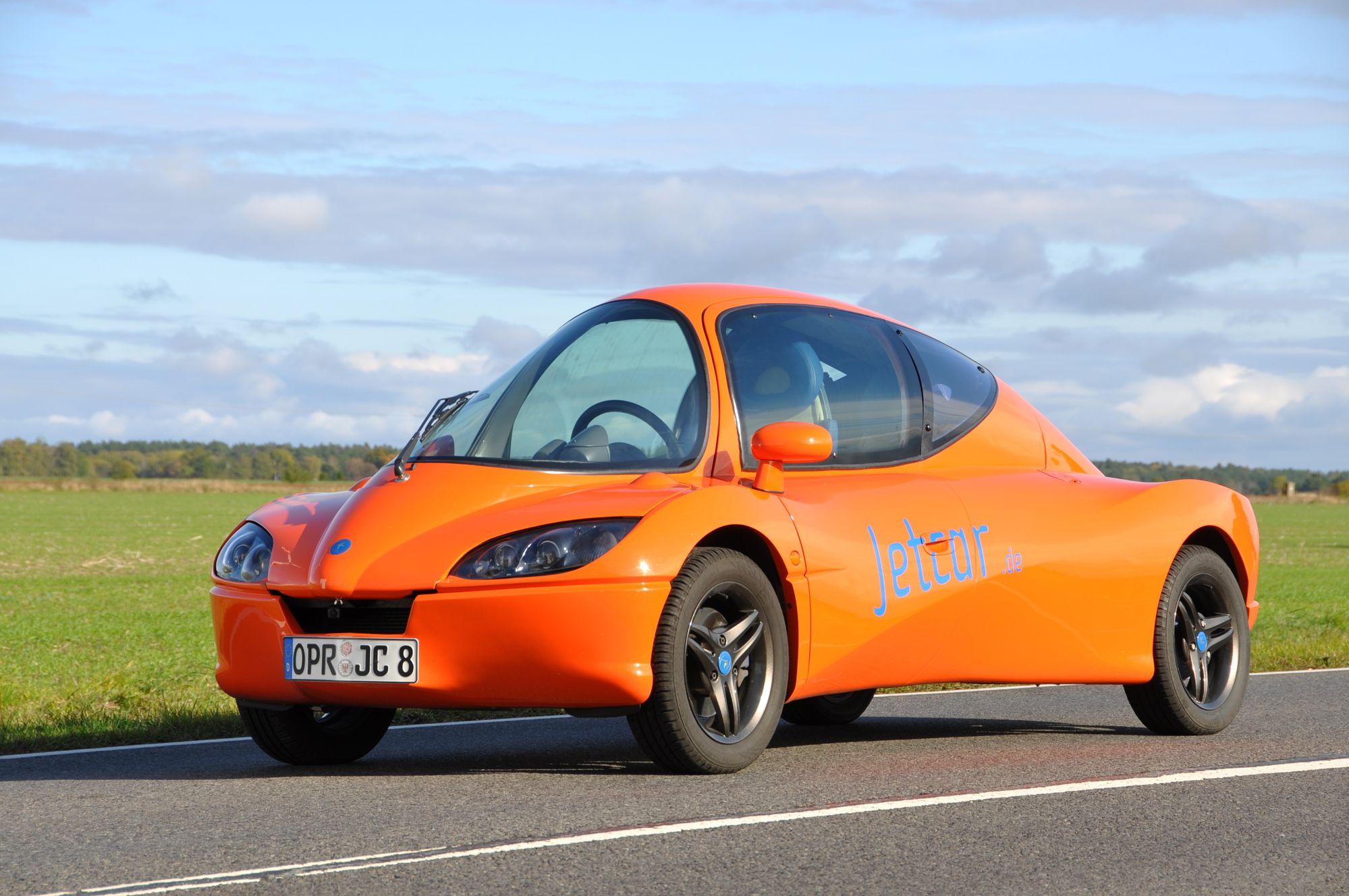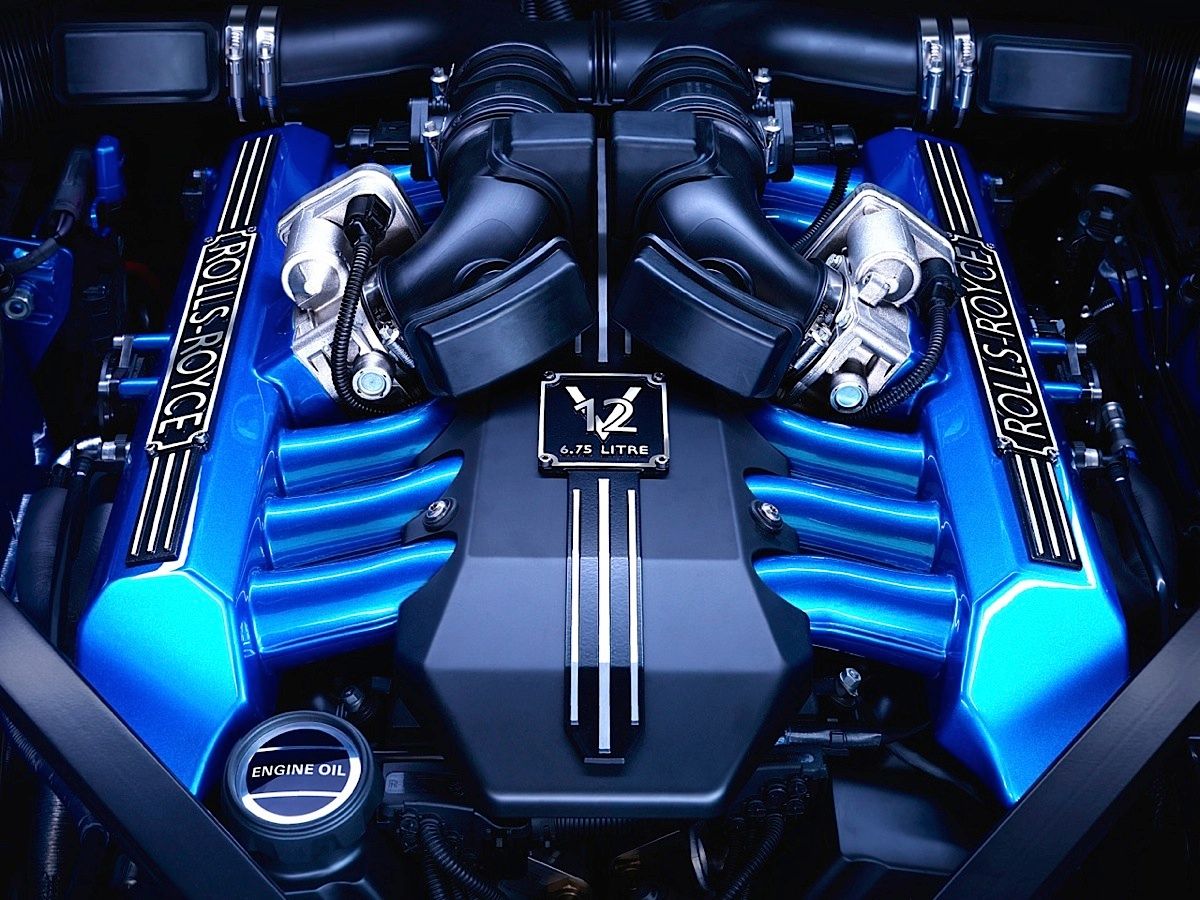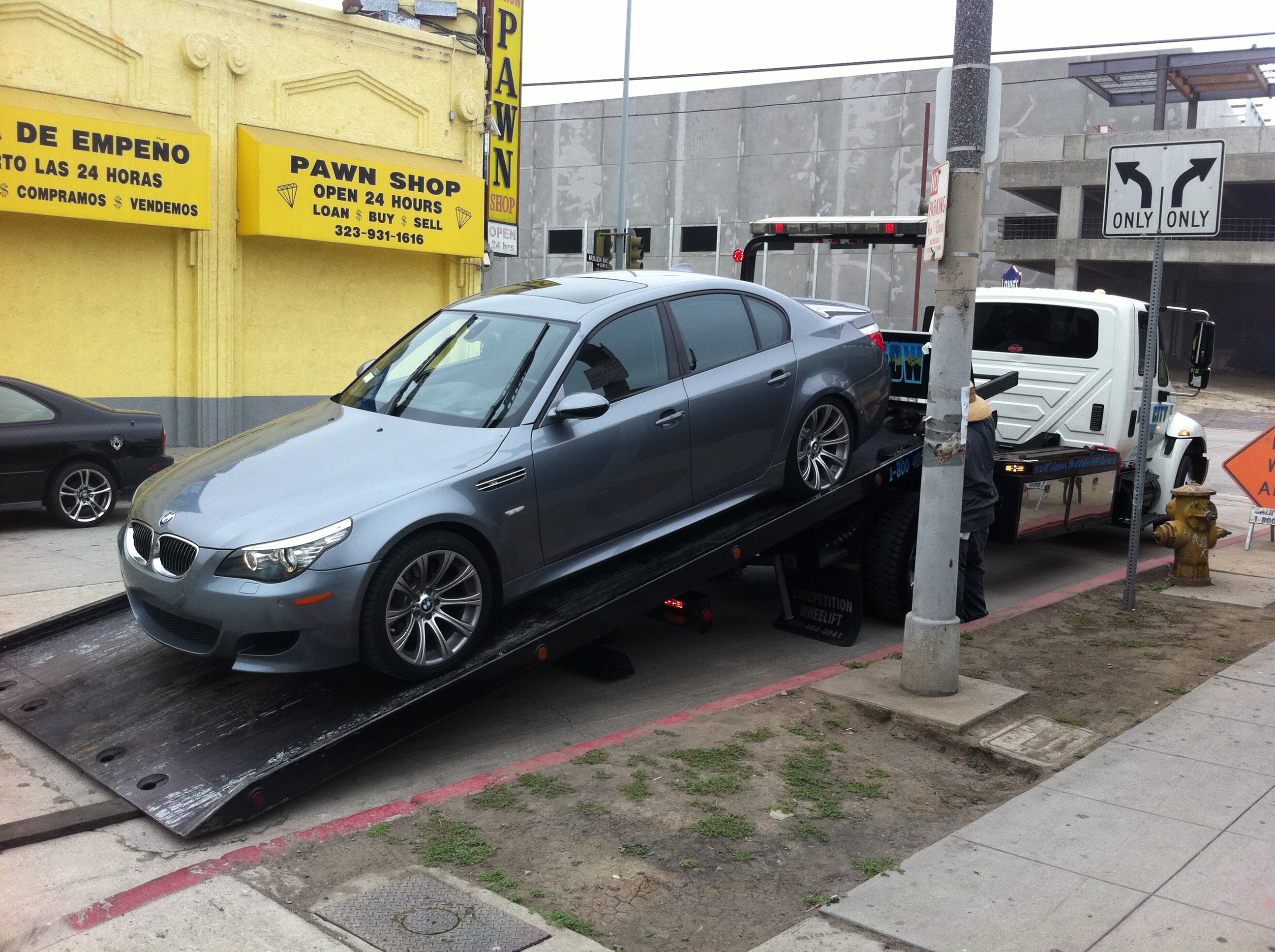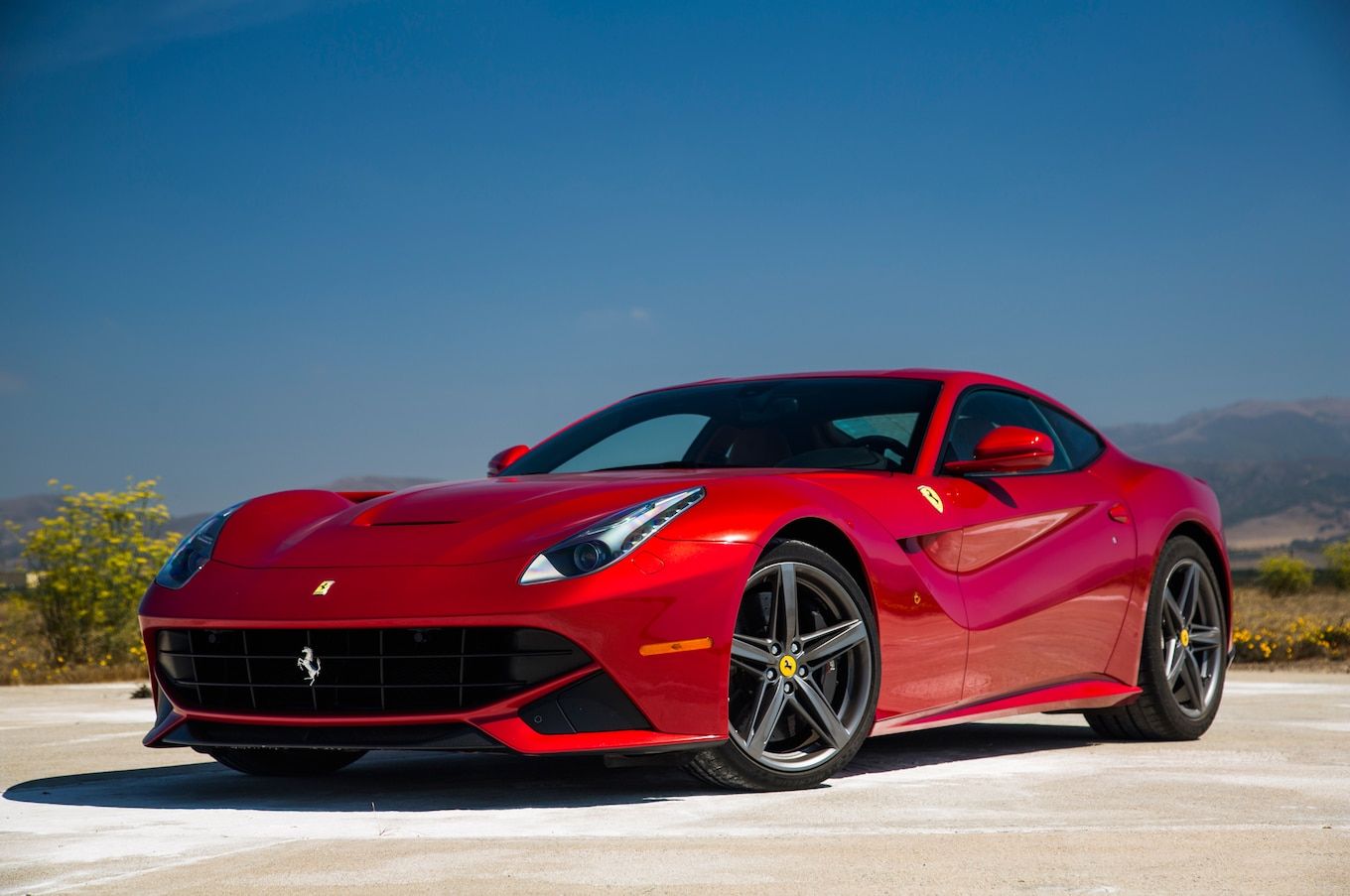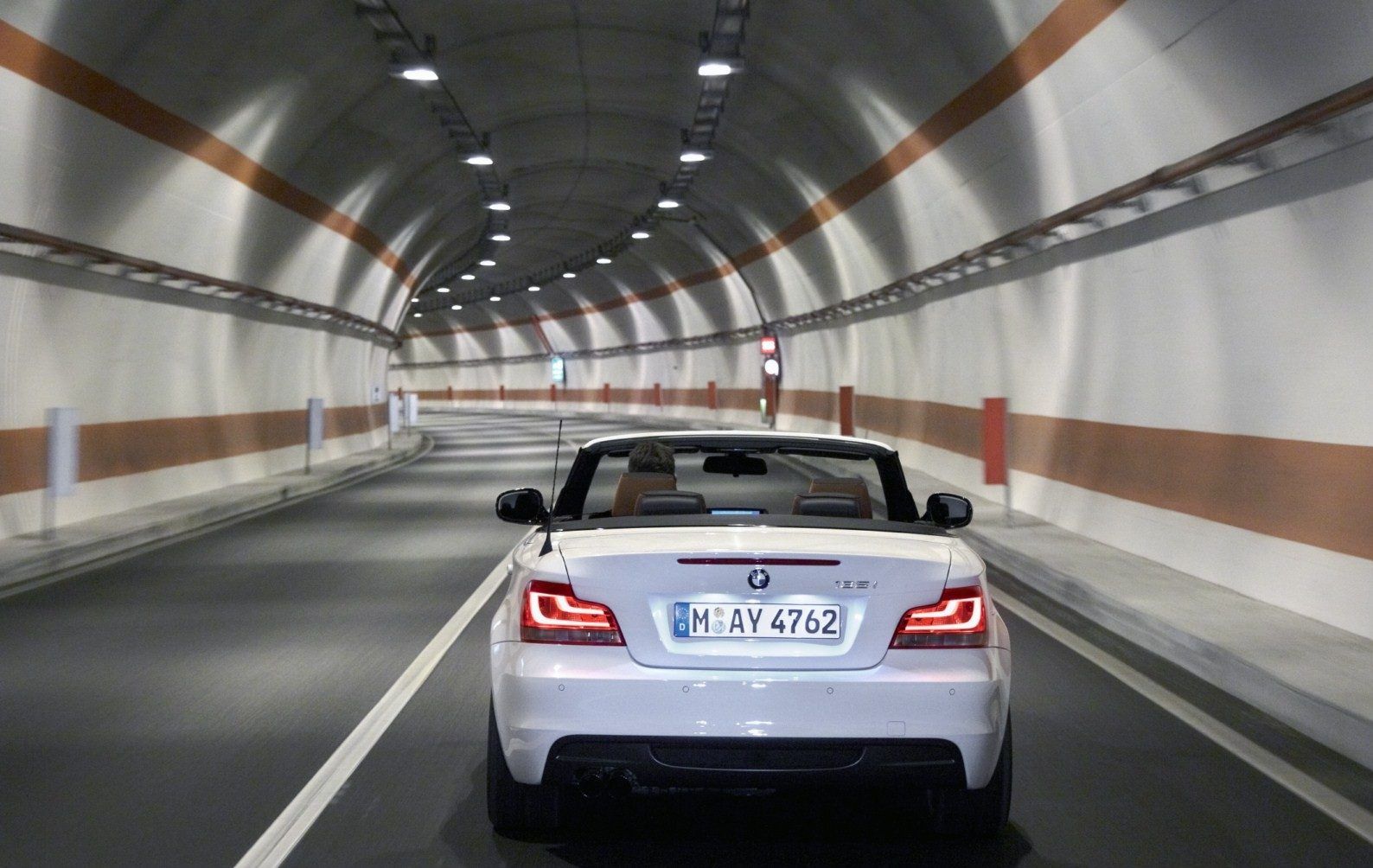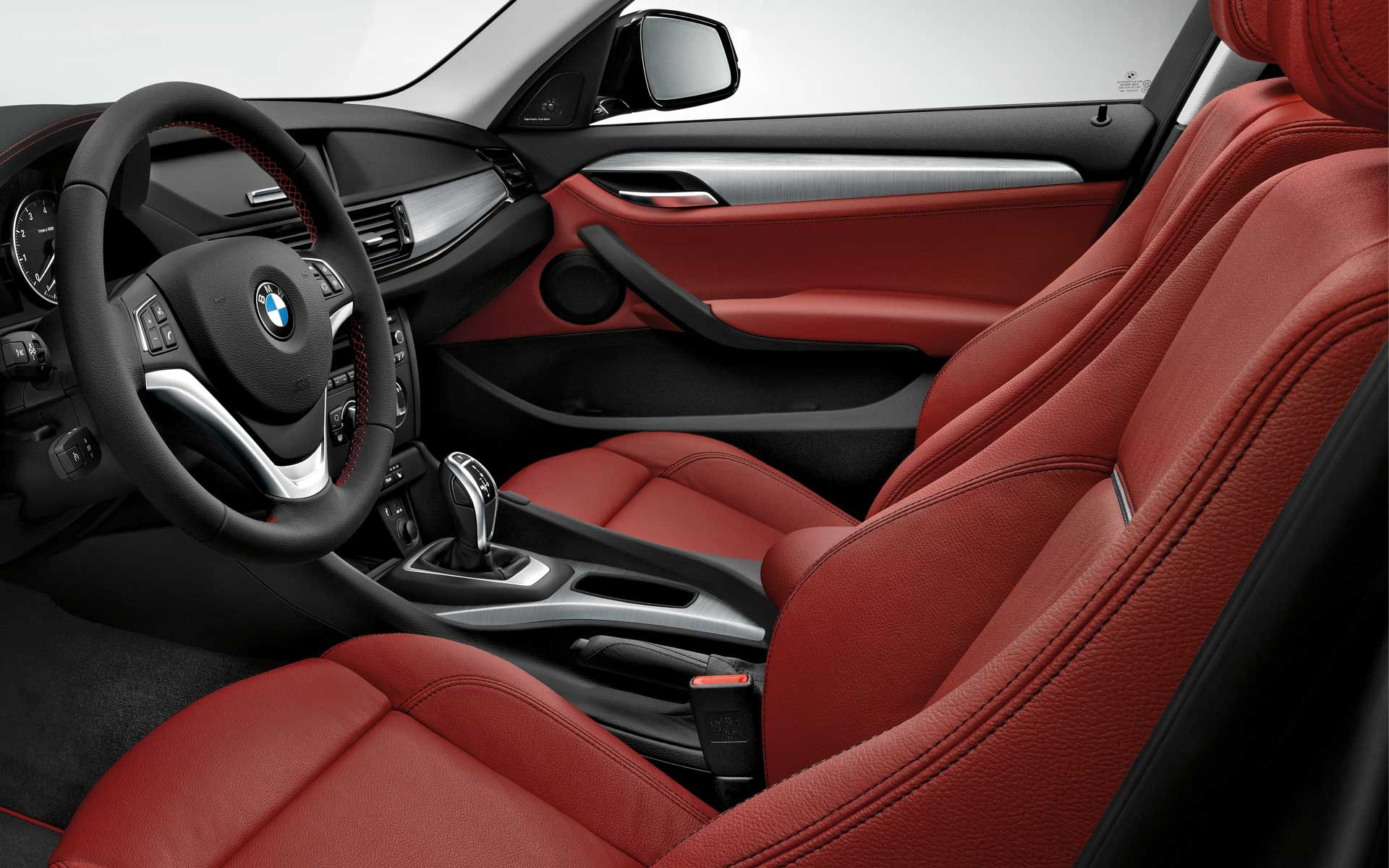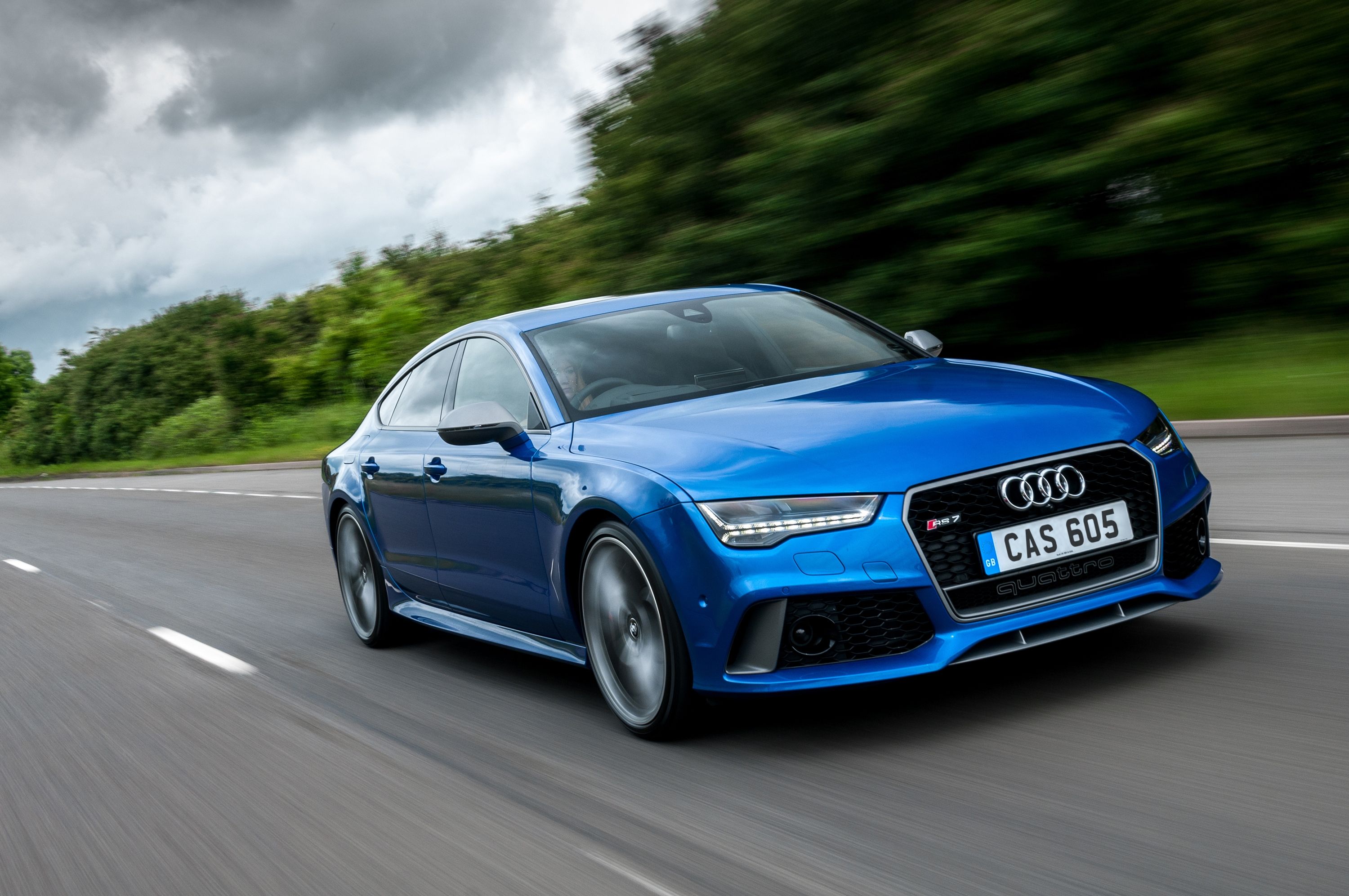So you think you know your BMWs from your Volkswagens, your Mercedes from your Audis? Perhaps you even know that Skoda is owned by VW, making it technically German. But I bet there’s more that you don’t know. Who is the fastest man to go around the Nurburgring? Have you ever heard of a car called a “Yes!”? Who invented the modern day car? German car manufacturers have owned a majority share of the car making market since cars began being made, but why? Is it justified, or have the Germans cleverly misled the entire world into honestly believing that their cars are superior?
German cars definitely have a hard edge, something that drives them, as do the people who create them. They feel a bit rougher, a bit angrier, and a bit more animalistic than any other cars. Whether or not this is a good thing is not for me to say, but it certainly makes German cars unique.
Some German cars can be at the forefront of modern technology, others can be lagging behind a little bit. Some are beautiful, others are horrendously ugly. Who knows what you’ll get when you buy a German car? You would expect some efficiency and reliability, but is even that a misconception or a lie? I’ve put together this list in order to give you the lowdown, all the info, everything you need to know, about German cars. Some of them are great, some are not so much. Read on to find out more.
20 To Buy: They call the Nurburgring home
Pretty much every car that is manufactured these days is tested on the infamous Nurburgring, and German cars are essentially born and bred on this track. Tested for speed, acceleration, and performance while tackling the huge sweeping corners, cars are challenged to the extreme on this course.
Of course the fastest German in the world, Michael Schumacher, holdds the record for the fastest lap around the 3.199 mile Formula 1 course, managing to pull his Ferrari round in under one and a half minutes back in 2004.
Anyway, back to cars, German cars are essentially built to go around this track, and to go around it fast, so whether you’re wanting a BMW or a Volkswagen, they will have been developed on the very same track used to test them. The testing circuit is done on the Nordschleife, or North Loop, which is 4.8 miles long, rather than on the full 14 mile Whole Course. The Nurburgring is surely a pilgrimage for every car fanatic, and it is where countless cars begin their life.
Any car tested on the Nurburgring is going to be powerful and competent, but cars that have been designed and built with it in mind are another thing entirely, they are German cars.
19 To Buy: The VW group owns pretty much all of them
Volkswagen may not seem like the most glamorous of car manufacturers, but when you look into it a bit deeper, they own all of the car manufacturers. Well, obviously not all of them, but absolutely loads.
It starts to get more exciting than your Skodas and Seats when you throw the likes of Audi and Porsche into the mix. Porsche, renowned for their 911s and speedy roadsters, are unmistakably Italian, but underneath they actually have that solid German efficiency to keep them going at the top of the game. Likewise with Audi, except that Audi is proud to be German. The angry face of an Audi TT speeding past you on the highway is actually just a Volkswagen.
It gets better, though. Industry giant Bentley was recently bought out by VW, meaning that the beautiful stately Bentley is also in fact a Volkswagen. And how about Lamborghinis? Yep, they’re VWs too, although I dare say a little bit faster than your average Beetle.
And the icing on the cake is Bugatti. No word of a lie, Bugatti are owned by VW. One of the biggest names in supercars and builders of household name the Bugatti Veyron, is in fact just a camper van with superchargers. I exaggerate, but you would never have guessed that all these cars are owned by Volkswagen.
18 To Buy: What other family camper would you want?
On the subject of the Volkswagen, if you’re in the market for a camper van, why shop anywhere else? Volkswagen has the monopoly on the cute retro vibe, and the VW camper van is no exception. Perfect for surfers who want a roof that holds their boards, or a family who want to be on the trendy side of the campsite, it is an all-round winner.
How can you not love the design? As much of a classic as the Mini or the Aston Martin DB5, the VW camper van captures the true essence of a road trip, especially if it’s the classic version you’re driving, rather than a newer reproduction.
Often found to be synonymous with hippy types of people, painted in all manner of flowers and interesting mandala designs, the VW is actually surprisingly inefficient at conserving fuel to save the planet. The petrol version only carries a small 2 liter engine and has over 2000kg of weight to pull, and that’s before you put anyone, or anything, inside. This leads to an average of around 25 miles per gallon for the old vehicles, but I guess that’s the price you pay for looking really cool and hipster.
17 To Buy: They’re good for the environment
German cars have some great specifications, but one that is often forgotten about is that German companies make some very eco-friendly vehicles.
Take the Smart car for example. While not the world’s prettiest car, or the world’s fastest for that matter, it was one of the first electric cars ever to appear on the roads. And, being owned by Daimler AG like Mercedes, it is a German car. And, to be honest, I’ve never seen a Smart car being towed away because it has broken down. So they’ve got to be alright, yeah?
What Smart pioneered, other car companies are building on, however. Much like Tesla (American, sorry), many car companies are taking Smart’s technology and putting it into their own vehicles. Thus, we are beginning to see electric vehicles on the roads without even knowing it, as they don’t all look like the car equivalent of a pug any more.
One such car is the BMW i8, a German made car that pushes the boundaries of what electric cars can do. 0-60mph in 4.4 seconds, a combined 356 brake horsepower from its two engines, it is a powerful hybrid. At over £100,000 (nearly $150,000), it is an expensive car, but an impressive one.
16 To Buy: Lewis Hamilton drives for Mercedes
Lewis Hamilton is fast becoming one of the best racing drivers that the world has ever seen. He broke countless records in his rookie season, becoming the youngest driver to ever lead the world championship, and in his second season becoming the youngest ever world champion.
The British driver has gone onto win 62 races and gain 119 podium positions from 73 pole positions. His four world championships mean he is the greatest ever British driver, eclipsing Sir Jackie Stewart.
The most important thing is, however, that Hamilton drives for Mercedes, a German manufacturer. Their cars have propelled him to three of his four world championships, and are proving dominant in the world of Formula 1. Of course they will always be challenged by the likes of Red Bull and Ferrari, but their recent success has proved how powerful Mercedes can be.
The only person ahead of Hamilton is German legend Michael Schumacher, who leads the Brit on both the number of wins and the number of championships. The Germans just seem to be the best at everything car-related, don’t they?
15 To Buy: “The best or nothing” and the “ultimate driving machine”
German car manufacturer slogans show the confidence that they are the best cars in the world.
Mercedes came up with “The best or nothing” to describe their market-leading vehicles, and you can see why. From the classic Benz 190 to the ultra-modern Mercedes-AMG GT Concept, Mercedes have unarguably turned out some of the best cars of the twentieth and twenty first centuries.
The other biggest German car company has created the “ultimate driving machine”. Yes, BMW somehow manage to create another “ultimate” every time they produce a new car, but we can let that one slide as they have produced some beauties.
Both BMW and Mercedes consistently create cars that look lovely from both the front and the back, meaning that you get slightly less annoyed when one overtakes you, because the back looks so nice. They also have track records of making cars that are comfortable and easy to drive, with all mod-cons like sat navs and adjustable seats and the latest surround sound systems.
Whether you can understand the difference between “the best” and the “ultimate” or not, there is no denying that Germany has produced two of the car industry’s biggest heavyweights, and that they will be around for a long time to come, hopefully keeping up producing some of the world’s greatest cars.
14 To Buy: BMW
BMW stands for Bavarian Motor Works, but as a company it stands for efficiency, comfort, and design. And while their name could not be more German if it wore lederhosen and scored penalties for fun, the cars are a lot more serious.
At BMW the designers try to balance the weight of every car they make, be it a tiny sports roadster or a lumbering 4X4. As such, every car BMW produces has an equal 50/50 weight distribution in the front and the rear, which is just one of the factors that make their cars so much fun to drive. The evenly distributed weight allows the car to take corners at speed with no significant understeer or oversteer.
Famous for the M5 as a luxury commuter car, and for the Z3 as a small sports car, BMW have many classic designs that are etched into the minds and souls of car fans worldwide. They continue to deliver great cars year in year out, and they will continue do so seemingly forever.
Their borderline arrogant promise of every car being the “ultimate driving machine” adds to their power and mystique as one of the world’s most important car manufacturers.
13 To Buy: Use them on the autobahn
Like they are made for the Nurburgring, German cars are also made for the autobahn. More accessible than a racetrack in the middle of nowhere, the German autobahns spread through the country like veins, pumping petrol through the European country.
If you didn’t already know, there is no speed limit on the autobahn. There’s a recommended speed, but that is just for normal people, not those with a super-fast German car. Pick a Mercedes, any Mercedes. Now drive, fast. If you include the Volkswagen owned car manufacturers, why not open the throttle of your “German” Lamborghini or Bugatti down the limitless highways? Now that’s given you goosebumps, I’ll bet.
German cars have been modeled on the autobahns, designed with intentions of using them on there in mind. So they go fast, and in a safe manner. Not shaking with no protection like an Ariel Atom, steadily accelerating up to huge speeds with the comfort of a big leather seat, air conditioning, and your favorite song playing in your ears.
Autobahns are the ultimate road. They may not be pretty, and they may not be empty, but the lack of a speed limit more than makes up for those facts. The autobahn is heaven for drivers, I just hope the highway to get there is equally exciting.
12 To Buy: They’ve been doing this for a while
A German named Karl Benz actually invented the car. In 1879, Benz first patented the internal combustion engine, that big thing that sits under the bonnet of most cars that we know and love.
Then, in 1886, he received a patent for his first automobile, and thus, the motorcar was invented, in Germany. Since then, Germany has built car after car, constantly improving and evolving. But who knew the first true car was patented, designed, and built in Germany?
It does explain a lot though. It’s in the Germans’ blood to produce new and innovative cars every year, as they are really sitting on the very land that gave birth to the first modern car. The engineers are descendants of Benz, if not by blood then by ideology and drive for improvement, and the designers carry the same vision as him.
Germany is truly the birthplace of the modern car, and it continues to develop both cars, laws, and drivers to aid the purest forms of driving around. The birthplace of Michael Schumacher and Sebastian Vettel, the cities that breathed life into the original designs for BMWs and Volkswagens. Germany has the richest car manufacturing history of any country in the world, and it is certain to continue to develop new and better cars for years to come.
11 To Buy: You can get a German Rolls Royce
Rolls Royce, the epitome of luxury, is owned by BMW.
This might be down to personal choice, but I feel that every car should aspire to be a Rolls Royce, whether it be an electric go-kart, a Formula 1 car, or indeed a German people carrier. The levels of luxury seen within Rolls Royces is simply immeasurable. It’s difficult to put into words, but a Rolls simply exudes class from its every pore, from the sweeping curves to the luxurious interior. They are careful to never go over the top though, and the designers always find the balance between class and over-indulgence.
The other thing about a Rolls Royce is how smooth the ride is. As the engine turns on, the car barely trembles, and as it pulls away you feel like you’re on the Eurostar, the Bullet Train, or the Oriental Express.
The Rolls Royce Phantom, a modern take on the classic, can reach 60mph from a standstill in 4.5 seconds. That is an exceptional speed, considering the ride quality and the fact that it weighs 2.5 tonnes. And it is now a German car, whether it feels it or not.
10 Not To Buy: They look like Smart cars
Yeah, this does not bode well. If you want a German car purely because it’s German, then your cheapest option may well be a Smart car. While this may be good for your tax and your fuel economy, you are forced to drive around in a Smart car. Not only does your car struggle to get past 70mph, it looks like someone sat on it.
There’s no way to put this politely, Smart cars are ugly. I would go as far to say that it is the worst looking car to populate the streets of the world. And it is attributed to Germany, the country that also brings us new Bugattis, Mercedes, and BMWs every year.
It is just difficult to understand why the German manufacturer would go to all the trouble of reinventing the engine, creating and fitting powerful batteries, reducing fuel emissions to a bare minimum, only to design the chassis to look like half a car. And half a bad car at that.
The design issues just don’t justify the green engine housed inside. Many cars have come since that incorporate electric motors but retained their classy designs and impressive specs, which Smart managed neither.
9 Not To Buy: What do they actually do best?
Japan makes the best rally cars, America makes the best muscle cars, and what do German cars do best? Nothing really. They’re good, but not really the best.
I guess if you include the Bugatti, then they nailed the fastest car a few years ago, but even that has been beaten now.
German cars don’t really fill a niche. They are just kind of, there. They are your bog-standard everyday cars that might break down, but might not. It can cruise at 70 on the highway, but much more and it will probably struggle.
At the faster end of the spectrum, a BMW or Mercedes is unlikely to beat a Ferrari in a drag race. And while the turns might be easier and more comfortable, they just don’t offer the excitement of a Corvette pulling out of a corner and tearing down the straight. They just feel very normal.
Don’t get me wrong, this isn’t necessarily a bad thing, it’s just not a particularly good thing. It’s nothing. A lack of excitement and flair separates German cars from those above them, they are the Rubens Barrichello to the Michael Schumacher cars of the world.
8 Not To Buy: It might be a Jetcar
Look at this. Germany somehow manages to produce some of the best and most beautiful cars in the world, but then again sometimes they produce cars like the Smart and the Jetcar.
Why was this produced? Whose idea was it to create a tiny monstrosity to rival the Smart car in terms of ugliness? And who saw the designs and decided to put it into production? Someone needs to be fired.
Its specs aren’t much either. A 0.8 liter 3 cylinder engine provide the tiny vehicle with 51 measly brake horsepower. There was no reason for this car to ever be made, so why was it made? Nobody really knows, but between this and the Smart car, there is enough bad juju surrounding German cars to balance out all the best BMWs or Mercedes.
If you were to travel in the single seat of the Jetcar 2.5, for which the earlier specs are relevant, you would undoubtedly be pushed off the road by a larger car. And, seeing as every other car is larger, I would be surprised if most even saw you in the first place. It honestly seems dangerous to drive one of these.
7 Not To Buy: It might be called a "Yes!"
We’re going from bad looks to bad names. German cars that we know and love go by classy names such as the Mercedes S-Class or the BMW 7 Series. Even Volkswagen is a satisfying name to say out loud, for goodness sake.
Who calls a car a "Yes!"? First of all, it’s a German car, so why isn’t it called a "Ja!"? Second of all, is the exclamation point really necessary? How excited are you really about a tiny orange Audi rip-off? If you’re more than slightly excited about that, then this car is being marketed towards you, the people who put exclamation marks at the end of names of things they like.
The "Yes!" Roadster isn’t a bad car, don’t get me wrong, it’s just the name that irks me. The 3.2 Roadster Turbo was designed for track use, and can get from 0-60mph in 3.9 seconds thanks to a 355 brake horsepower engine. The small car has a nifty top speed of 175mph, too. If only they had named it differently, then it would be so much easier to like this car…
6 Not To Buy: V12 engines are not all good
German cars have found a way to one-up most other cars, and that by putting massive V12 engines under their bonnets. This is great for going really fast and making loads of noise (and I mean loads), but there are downsides to having a V12 engine.
Not only is a V12 really really heavy, therefore slowing your car down, they are also incredibly expensive. The power that is provided by a piston firing every 60 degrees of crankshaft rotation and the high revs achievable with such an engine makes it incredibly sought after, and incredibly expensive to produce. Also a factor is space. V12 engines are huge. And with 12 pistons and 48 valves, things can easily go wrong in there…
V12s also drink petrol and diesel like it’s juice. They are the least fuel efficient of any popular engines when going at the high speeds that you have inevitably bought them for, offering very few miles to the gallon, and you’ll find yourself in a pretty high tax bracket as well. You’ll be filling up just for a quick trip to the shops, and a full tank of petrol is hardly worth it for the fast and noisy commute is it?
5 Not To Buy: Electrical malfunctions
German cars have developed a name for themselves in relation to their electrical faults, which goes against the usual perception of German cars as reliable and efficient.
What’s more, instruction booklets tend to be too simple, often not telling you how to fix the problem, instead explaining to head to your nearest dealership for them to repair your problem. This could be a very expensive way to replace a five dollar fuse or other such simple problem that could usually be resolved using a simple handbook.
Express.co.uk said that in a survey by WarrantyWise, “Mercedes-Benz and Audi, which were also perceived to be among the 10 most reliable brands, were placed just above BMW in the real-world data, at 27th and 28th, respectively.”
Myths of efficiency seem to surround German cars, as none of the top 10 most reliable cars in this survey by WarrantyWise were German. In fact, six of the top ten were Japanese, making them by far the most reliable country for building cars. The highest German car manufacturer on the list for reliability was, ironically, the Smart car, in 12th place.
4 Not To Buy: Italian cars just have more style
Think Ferrari, Maserati, Pagani, even Alfa Romeo or Fiat. They all sound more exciting than any German car. And they all are more exciting than any German car.
Ferraris have too many classic models to count, and their newer designs are ridiculously quick. The Ferrari F12 Berlinetta is a beautiful looking car, for instance, but it has blistering pace.
730 brake horsepower comes from the V12 engine, sending the rear wheeled drive Italian car from 0-60 in about 3 seconds. A top speed of 211mph puts it a little bit behind the Pagani Huayra.
The Pagani is another slick Italian machine that I could talk about for hours, but I won’t. I’ll move on to more “normal” Italian road cars. Why is the Fiat 500 better in every possible way than a VW Beetle? The Italian and German equivalents couldn’t be further apart if they tried, the only similarity between them is their hatchback. The Fiat oozes style and charisma, while the VW sits there looking dejected and awkward. I guess the originals had their own quirky sense of style, but that just doesn’t come through in most modern German cars I’m afraid.
3 Not To Buy: They are designed for Europe
American and European roads are very different. The long open highways of Route 66 and other such straight plains burst through America, allowing a driver to simply open the throttle and push the accelerator to the floor. Nothing to worry about but going forwards in a straight line.
That is why muscle cars are an American institution. They go forward, fast. However, German cars are designed with different roads in mind. Curving through the tunnels of a Swiss mountain or winding between small towns and cities, European roads are just smaller, narrower, and have far more turns.
This means that, when designing a car, a lot more thought goes into how well it takes those turns, and how it copes with a lot of them in quick succession. A large amount of engine power goes into making the wheels work together on a tight bend and the balancing act to keep the weight evenly distributed and therefore the rear of the car tucked in neatly. This engine power is wasted on a straight road, however it cannot be rerouted to add more acceleration or power. So, if you’re in America, a BMW might not be your best choice.
2 Not To Buy: Too many optional extras
This is especially true in the BMWs and Mercedes, but also to some extent in other German cars, too. The companies prize comfort and class over speed, and therefore add too many little extra bits that weight the car down.
Plush leather seats that you can probably choose how firm they feel, four different types of wood for the dashboard, a gearstick made of crystal – okay maybe not the last one, but you see the point. What is the need for all these extras, for the sat-nav to have twelve different regional accents or for the cup holders to have little LEDs inside them?
Every tiny extra weighs the car down a tiny bit more, but it all adds up, and it all makes the car slower. Now I’m not suggesting ripping the back seats out for some weight loss, and sending the kids to school on the bus, but there are certainly areas where German cars can shed some unnecessary pounds.
But, maybe this is a good thing if you’re more interested in a comfortable ride than shaving seconds off a lap time, or indeed, a commute. Each person’s tastes are different, but exciting cars are built for speed, rather than mahogany.
1 Not To Buy: No One Will Like You
It used to be the case for BMW drivers, and now the baton has been passed on to Audi drivers. Who knows if there are any facts showing a correlation between poor driving and the make of car that you drive, but, well, there kind of is.
BMW and Audi drivers have long had reputations of undertaking, cutting other cars off, and generally giving off an air of self-importance that makes it seem like they think they are better than any other drivers.
This kind of arrogance is accepted if you’re driving a Ferrari or a Mustang, because you have the flash car to back it up with, but in an Audi it just seems like you’re compensating for something…
This can have a negative impact on drivers who drive perfectly safely and calmly on the roads, but happen to be behind the wheel of one of these stereotyped vehicles. One small error or mistake and horns will be honked, and profanities yelled, because people will assume your mistake was on purpose. Whether it was or not, you will feel victimized purely because you are driving a German car.
Sources: audi.com, bmw.com, wikipedia.org


